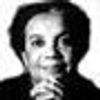
“Daddy,” the boy said, “I don't want to disobeyyou, but I have made my pledge. If you try to keep me home, I will sneak off.If you think I deserve to be punished for that, I'll just have to take thepunishment. For, you see, I'm not doing this only because I want to be free.I'm doing it also because I want freedom for you and Mama, and I want it tocome before you die.”
This teenage boy overheard talking to his father by Dr. Martin Luther King, Jr. was one of the hundreds of Birmingham children and youths who, 50 years ago thismonth, decided to stand up for freedom. They stood up to fire hoses andpolice dogs and went to jail by the hundreds and finally broke the back of Jim Crow in that city known as “Bombingham.” On this 50th anniversary of the Birmingham Children’s Crusade it is a time to remember, honor, and follow the example of the children who were frontline soldiers and transforming catalysts in America’s greatest moral movement of the 20th century – the movement for civil rights and equal justice.
The Children’s Crusade happened at a critical time in the civil rights struggle in Birmingham. In April 1963 the Southern Christian Leadership Conference, together with the Alabama Christian Movement for Human Rights and its fearless leader Reverend Fred Shuttlesworth, hadstarted a direct action desegregation campaign in the city. There were mass meetings, lunch countersit-ins, nonviolent marches, and boycotts of Birmingham’s segregated storesduring the busy Easter shopping season. Dr. King became one of several hundred peoplearrested in the first weeks of the campaign when he was jailed for violating ananti-protest injunction on April 12, Good Friday. Four days later he wrote his “Letterfrom a Birmingham Jail.” As the dayswent on with little response from city leaders, a new tactic was raised: including more children and youths.
Childrendidn’t face some of the risks adults might including losing breadwinning jobs,and college students (I had the privilege to be among them) had already proven tobe extremely effective activists in cities across the South in desegregatinglunch counters. But once it became clearthat many of the children volunteering for meetings and training sessions inBirmingham were high school students and some even younger, concern was raised aboutwhether allowing and encouraging these children to protest was too dangerous. Dr. King later described the decision thisway: “Even though we realized thatinvolving teenagers and high-school students would bring down upon us a heavyfire of criticism, we felt that we needed this dramatic new dimension. Our people were demonstrating daily and goingto jail in numbers, but we were still beating our heads against the brick wallof the city officials’ stubborn resolve to maintain the status quo. Our fight, if won, would benefit people ofall ages. But most of all we wereinspired with a desire to give to our young a true sense of their own stake infreedom and justice. We believed theywould have the courage to respond to our call.”
The children’sresponse “exceeded our fondest dreams.” James Bevel, Andrew Young, Bernard Lee, and Dorothy Cotton helped identifyand train the students. For the childrenMay 2 was “D-Day.” Black disc jockeyswere key allies in encouraging and deploying their listeners. Class presidents,star athletes, and prom queens from local high schools led the way as hundredsof children skipped class, gathered at the 16th Street Baptist Church, andmarched into downtown Birmingham in groups of fifty, organized into lines twoby two and singing freedom songs. Morethan a thousand students marched the first day, and many hundreds werearrested. Segregationist police commissioner Bull Connor’s overwhelmed force startedusing school buses to take the children to jail. But that first wave of children was only thebeginning. When hundreds more returnedthe next day, Bull Connor directed the police and fire department to beginusing force on the child marchers. Thedecision surprised even those used to his meanness and brutality but it was notenough to stop the determined young marchers. The searing heartbreaking pictures of childrenbeing battered and tossed about by powerful fire hoses and attacked by policedogs appeared on front pages around the country and world and helped turned thetide of public opinion in support of Dr. King’s local and the national civil rightsmovement’s fight for justice.
Marchesand protests continued in Birmingham with children leading the way. As somewere arrested and attacked, more and more kept coming to take their place leavingBirmingham jails so overflowing that some child prisoners were held at thecity’s fairground and others in an open-air stockade where they were pelted byrain. On May 8 a temporary truce wascalled and on May 10 an agreement was reached that released the jailed childrenand others on bond and paved the way for desegregation of Birmingham’s publicfacilities. Hateful White segregationistsin the city did not give in quietly. Within hours the Gaston Motel where Dr. King and other SCLC leadersstayed and Dr. King’s brother Reverend A.D. King’s home were firebombed. Four months later, a bomb was placed underthe steps of the 16th Street Baptist Church with a timer set to go off Sundaymorning that exploded as children were in the church’s basement preparing tolead Youth Sunday services. Fourteen-year-olds Addie Mae Collins, CaroleRobertson, and Cynthia Wesley and 11-year-old Denise McNair were killed andmore than 20 others were injured.
Morethan a year later, when one interviewer asked Dr. King how he felt after thatbombing he first described his despair at thinking that if men could be thatbestial maybe there really was no hope. But, he said, time had eventually “buoyed me with the inspiration ofanother moment which I shall never forget: when I saw with my own eyes over three thousand young Negro boys andgirls, totally unarmed, leave Birmingham’s 16 Street Baptist Churchto march to a prayer meeting—ready to pit nothing but the power of their bodiesand souls against Bull Connor’s police dogs, clubs, and fire hoses.” He told the same interviewer: “I never will forget a moment in Birminghamwhen a white policeman accosted a little Negro girl, seven or eight years old,who was walking in a demonstration with her mother. ‘What do you want?’ the policeman asked hergruffly, and the little girl looked him straight in the eye and answered,‘Fee-dom.’ She couldn’t even pronounce it, but she knew. It was beautiful! Many times when I have been in sorely tryingsituations, the memory of that little one has come into my mind, and has buoyedme.”
Thesame example that buoyed Dr. King should inspire us today. As the Children’s Defense Fund makes finalpreparations for our 2013 Freedom Schools summer enrichment program that willserve nearly 12,000 children in 96 cities our theme for this year is “Childrenand Youth as Movement Builders and Change Agents.” We seek to honor on thisfiftieth anniversary of the Birmingham Children’s Crusade the role of childrenand youth who were frontline soldiers in desegregating public schools and publicaccommodations. I hope they will inspire us to remind childrenand youth today that they are not citizens in waiting; they too can be transformingagents for change.
